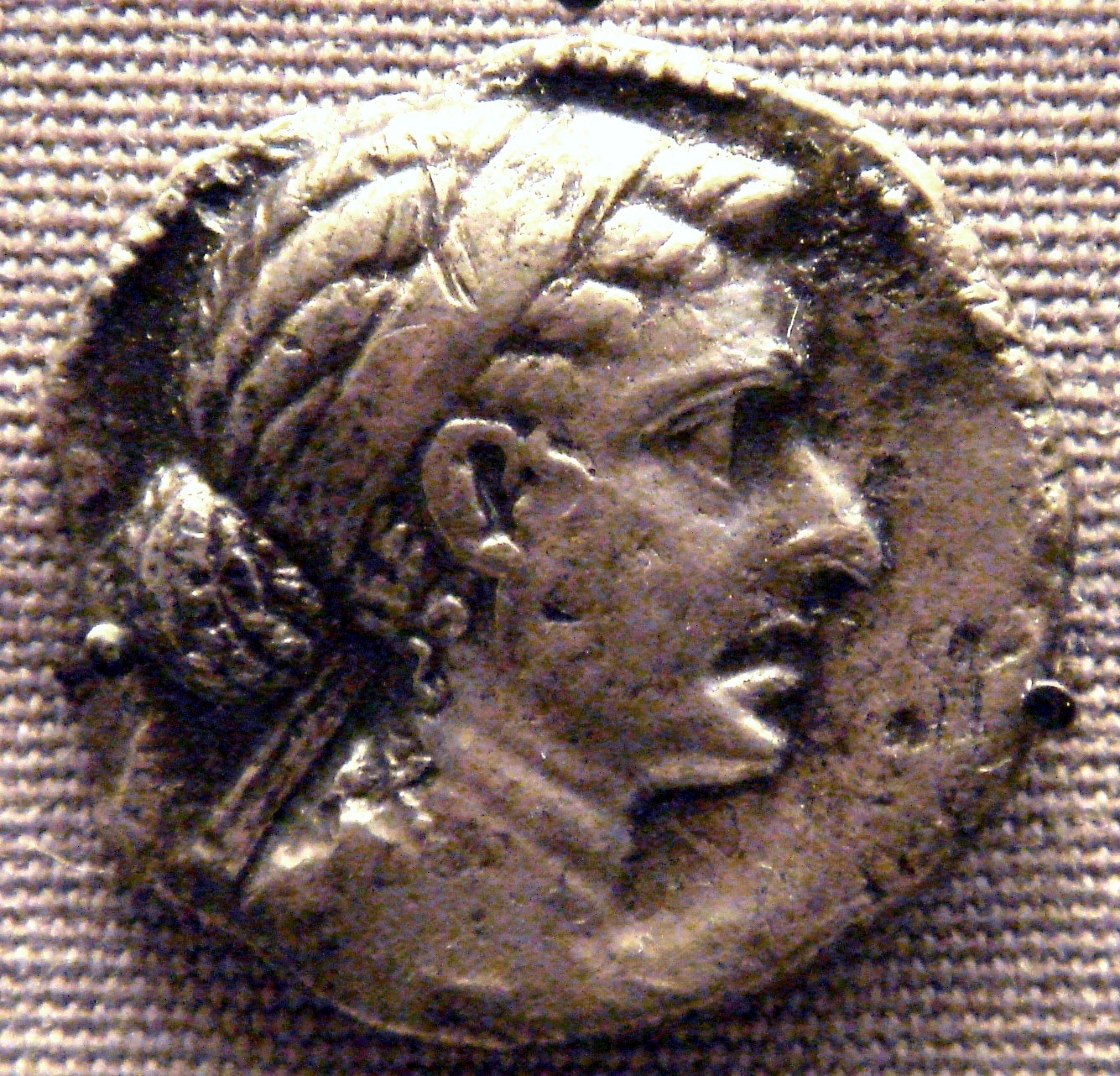This National Geographic video is about Cleopatra.
From Associated Press:
Apr 19, 10:33 AM EDT
Coins, mummies and statues point to Cleopatra tomb
By PAUL SCHEMM
Associated Press WriterBURG EL-ARAB, Egypt — Egypt’s top archaeologist made his version of a sales pitch Sunday, presenting 22 coins, 10 mummies, an alabaster head and a fragment of a mask with a cleft chin as evidence that the discovery of the lost tomb of Mark Antony and Cleopatra is at hand.
Zahi Hawass showed off the ancient treasures to journalists during a tour of a 2,000-year-old temple to the god Osiris where they were found. He believes the site near the Mediterranean Sea contains the tomb of the doomed lovers that has been shrouded in mystery for so long.
“In my opinion, if this tomb is found it will be one of the most important discoveries of the 21st century because of the love between Cleopatra and Mark Antony, and because of the sad story of their death,” he said.
Mark Antony and Cleopatra challenged Caesar Augustus for control of the Roman Empire more than two millenia ago. Their armies were defeated and rather than submit to capture, the two lovers committed suicide – Mark Antony by his sword, Cleopatra with a poisonous asp.
The Roman historian Plutarch said Caesar allowed the two to be buried together, but their tomb was never found.
Hawass’ claim is the latest spectacular announcement by the archaeologist, who continues to capitalize on the world’s fascination with ancient Egypt. He regularly unveils discoveries that are often met with skepticism and bemusement by Egyptologists abroad.
With his trademark Indiana Jones-style hat, Hawass guided journalists through the Toposiris [sic; Tabusiris] Magna temple 30 miles (50 kilometers) from Egypt’s ancient seaside capital of Alexandria. One by one, he held up the fruits of three years of excavation by a team from the Dominican Republic, including the fragment of a mask bearing a distinctive cleft chin.
“If you look at the face of Mark Antony, many believed he had this cleft on his chin and that’s why I thought this could be Mark Antony,” said Hawass
But he admitted they “are not sure 100 percent” and joked that the mask could depict Richard Burton, the actor who played Mark Antony in the 1963 move “Cleopatra” that also starred Elizabeth Taylor.
Kathleen Martinez, the Dominican archaeologist who has been excavating the site for the last three years, said she chose the temple based on 12 years of studying the life of Cleopatra.
“I believe it could be Taposiris [sic] Magna because it was the most sacred temple of its time,” she said, explaining that the lovers were buried in a temple rather than a public tomb to protect them from the Romans.
Inside the temple enclosure, Martinez’s team also found coins bearing Cleopatra’s name and face, as well as the carvings that could represent the doomed lovers.
For Hawass, however, the most significant element was the recent discovery of tombs from the same time period ringing the area around the temple, including 10 mummies of apparent nobles.
“The discovery of the cemetery this week really convinced me that there is someone important buried inside this temple,” he told the cameras, while standing inside a rough cut tomb surrounded by niches filled with bones and whole skeletons.
“No one would be buried outside a temple without a reason. We saw that in the pharaonic days they were always buried beside pyramids,” he said.
The discovery of the cemetery prompted Hawass to conduct a study of the temple with ground-penetrating radar, which revealed three possible sites for subterranean burial chambers 40 feet (12 meters) underground.
Excavations will start Tuesday, said Hawass, who predicted the mystery of the final resting place for the two would finally be solved. A second radar study is set for April 22.
In the past, archaeologists have not always backed Hawass’ more enthusiastic claims and suggested a degree of caution is sometimes warranted.
See also here.
Scientists have uncovered heart disease in 3,500-year-old Egyptian mummies, suggesting the risk factors behind it are not just modern in nature: here.
Overlooked statue found to represent children of Mark Anthony and Cleopatra: here.
How volcanoes may have ended the dynasty of Ptolemy and Cleopatra. Volcanic ash layers suggest eruptions may have messed with crop-dependent monsoons, leading to an era of revolt. By Carolyn Gramling, 3:54pm, October 17, 2017.
Related articles
- Adventures in Archaeology: Kathleen Martinez Berry’s Quest to Find Cleopatra (knowledge.wharton.upenn.edu)
- Satellite Images Provide Blueprint for Ancient Egypt (history.com)
- A very honest woman, but something given to lie. (oldsaltbooks.wordpress.com)
- Tomb of Ancient Egyptian Princess Discovered in Unusual Spot (livescience.com)
- Egypt Reopens Giza Pyramid And Tombs To Tourists (egyptourism.wordpress.com)
- Mummy Mystery: Multiple Tombs Hidden in Valley of Kings (discoverynews64.wordpress.com)
- Dr. Zahi Hawass conference in my city / Meeting a legend – Oct 2nd, 2013. (authordianaarco.wordpress.com)
- The Real House Wives of Ancient Egypt (yallatoursblog.com)














